
What is a Backlink and How to Build Quality Backlinks in 2025?
Jan 16, 2025 11 Min Read 4643 Views
(Last Updated)
Somebody told you that to rank on the top of the search pages, you must have a lot of good-quality backlinks. Now, if you’re new to the world of SEO and digital marketing, you might be facing trouble navigating this new term-backlink.
Naturally, your mind would be bustling with questions like what are backlinks, how do backlinks work, and most important of all, how can we build high-quality backlinks to enhance our website’s ranking on Google’s SERP?
Worry not, you’re at the right place. In this blog, we’ll explore all about backlinks, what they are, what’s their significance, and how anyone can gain quality backlinks. So, let’s get started, shall we?
Table of contents
- What is a Backlink?
- Importance of Backlinks
- What Are High-Quality Backlinks?
- Relevance
- Authority of the Linking Site
- Traffic
- Follow vs. NoFollow
- Anchor Text
- Placement
- Linking Domain's Freshness
- How to Get High-Quality Backlinks?
- Get into Guest Blogging
- Create Shareable and Linkable Resources
- Update Old Content
- Publish Comprehensive Niche Guides
- Scout for Broken Links Across the Web
- Get Mentioned Across Relevant Listicles
- Claim Mentions as Links
- Use Skyscraper Technique
- Adopt HARO
- Leverage Social Media and Influencers
- Create and Offer a Valuable Tool For Free
- Get Links Through Image and Video Content
- Perform and Publish Original Research
- Get Links from Directories and Resource Pages
- Get Help from Partners/Industry Contacts/Suppliers
- Concluding Thoughts
- FAQs
- What is a backlink?
- Why are backlinks important for SEO?
- How to get high-quality backlinks?
- What makes a backlink high-quality?
- Can backlinks affect my site's ranking negatively?
- Are NoFollow links valuable?
What is a Backlink?
Technically speaking, a backlink is a hyperlink from an external website that points back to your website. It’s a digital vote of confidence, signaling to search engines that other websites consider your content valuable and relevant.
Backlinks act as an endorsement of your site’s authority and trustworthiness. Think of a backlink as a professional recommendation in the digital world. Just as a glowing reference from a respected individual can open doors in your career, a backlink from a reputable site can significantly boost your website’s visibility and credibility.
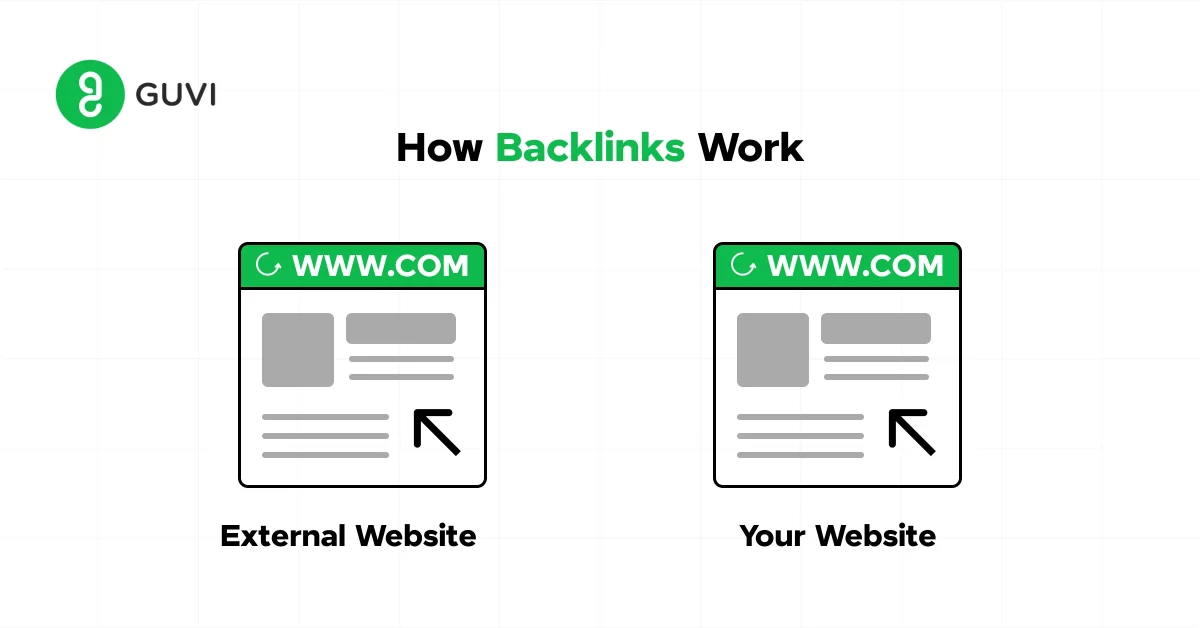
For example, a cooking blog linking to your article on the best olive oils adds context and value, indicating to search engines and readers alike that your content is both relevant and authoritative. This is applicable across industries.
Backlinks serve multiple purposes: they help search engines discover new pages, understand the relationship and relevance between sites, and evaluate a site’s authority and value. Let’s look at it more closely.
Before that, if you’re looking to master key SEO concepts like backlinks, then enrolling in GUVI’s Digital Marketing course can help you become an expert in the digital world, regardless of your level of marketing expertise. Learn the ins and outs of email marketing, social media marketing, content production, SEO, and more from professionals in the field. Through practical projects and real-world case studies, acquire job-ready skills with globally recognized certifications.
Or else, you can also explore Marketing Research Techniques through GUVI’s Marketing Research Techniques certification course.
Importance of Backlinks
The digital landscape is a competitive arena where visibility is key to survival. Backlinks are the lifelines that can elevate your site from obscurity to prominence in search engine results.
Among the 200 ranking factors Google uses, backlinks are considered among the most important SEO ranking factors. Here are some statistics to show the importance of backlinks:
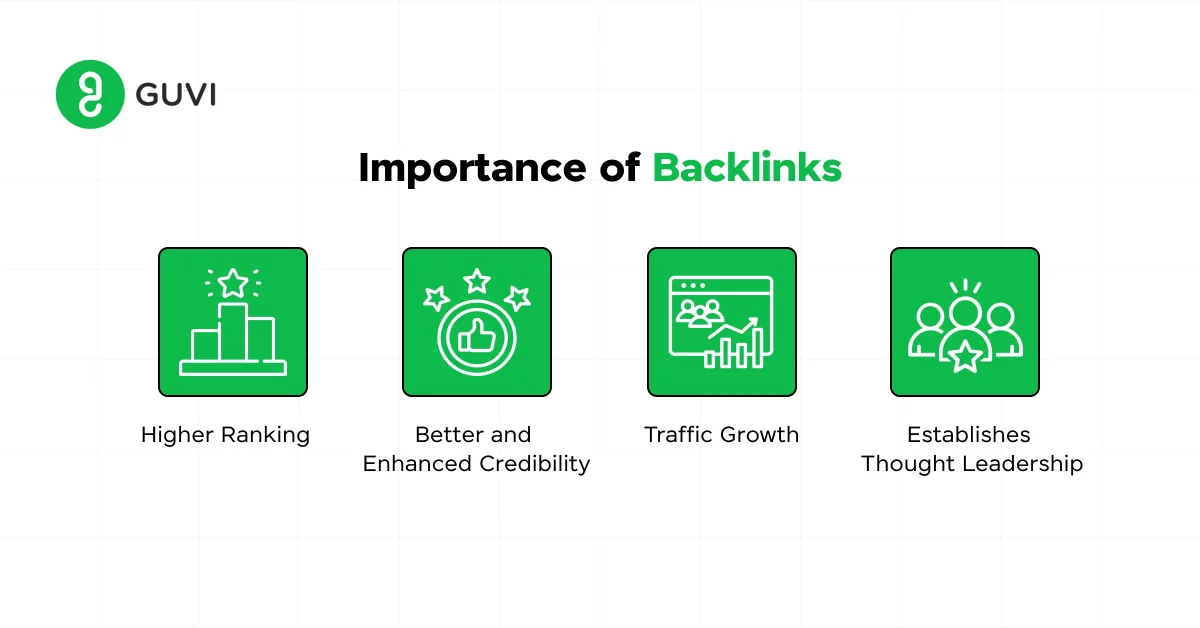
- Studies show that pages with a high number of quality backlinks tend to rank higher.
- A survey by Moz revealed that backlinks account for over 50% of web page search rankings
- Another study indicated that the top result on Google’s first page has, on average, 3.8 times more backlinks than positions two through ten.
- It was also found that sites that have between 30 and 35 backlinks receive more than 10,501 monthly visits!
This data underscores the undeniable impact of backlinks on your site’s SEO performance. They highly improve your site’s visibility and search ranking by driving referral traffic and enhancing your site’s credibility and user trust. But there’s a catch. They should be quality backlinks.
Must Read | Top Digital Marketing Trends to Watch Out in 2025
What Are High-Quality Backlinks?
Yes, to rank a website well through backlinks, you should have superior-quality backlinks. Not all backlinks are created equal.
A high-quality backlink is a link from another website to yours that significantly contributes to your site’s credibility, authority, and search engine ranking.
These backlinks are considered valuable for several reasons, and they share common characteristics that distinguish them from lower-quality links.
Here are the key attributes that define a high-quality backlink:
Characteristics of High-quality Backlinks are:
1. Relevance
The linking site’s content should be relevant to your own. A high-quality backlink comes from a site that shares a thematic connection with your content. This relevance tells search engines that your content is useful in a specific context, enhancing its authority and ranking for related queries.
For instance, a link from a renowned culinary blog to a restaurant’s website not only drives relevant traffic but also boosts the restaurant’s search engine credibility in the culinary niche.
2. Authority of the Linking Site
Links from established, reputable sites have more influence. The authority of a website, often measured by metrics like Domain Authority (DA) or Trust Flow, plays a significant role in the value of a backlink.
A link from a site recognized as an authority by search engines can significantly enhance your site’s trustworthiness and ranking potential. Consider this, a backlink from The New York Times is any day more impactful than one from a little-known blogger.
Must Explore Types of Search Intent in SEO: Rank Content on SERP #1
3. Traffic
Backlinks from high-traffic websites can drive a significant amount of direct traffic to your site, beyond improving SEO. They can pass more value, as they indicate popularity and credibility.
This indicates to search engines that your site is also likely to be valuable to users, potentially improving your rankings. The rationale is straightforward: if a lot of people are visiting a site, and it links to you, your site likely offers something valuable.
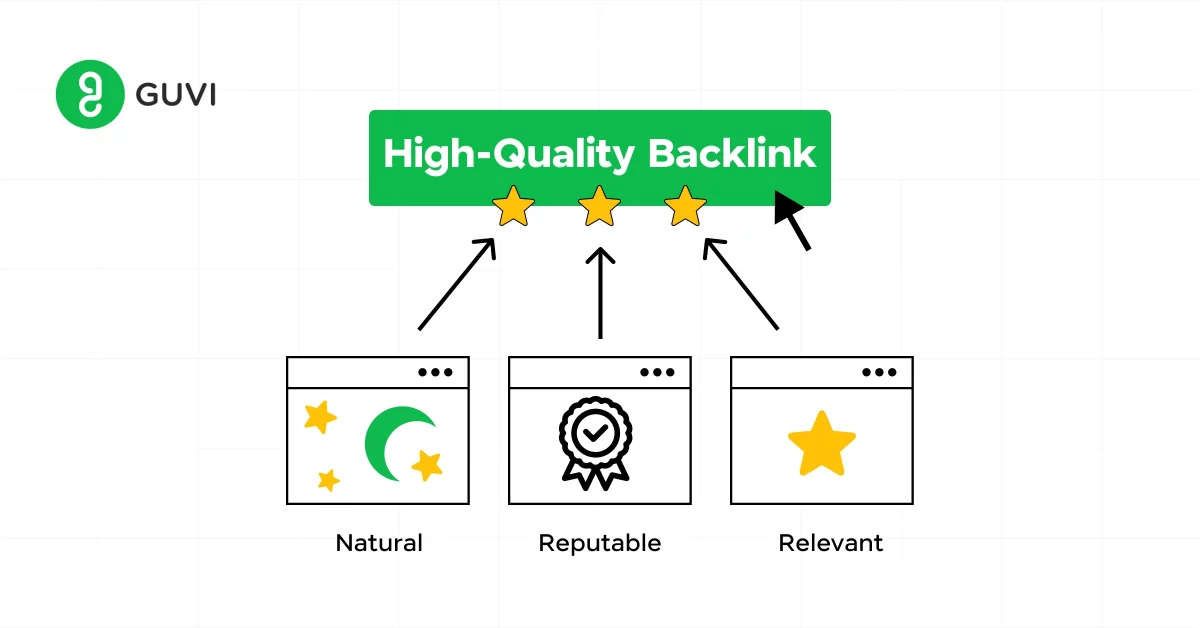
4. Follow vs. NoFollow
“Follow” links tell search engines to consider the backlink in ranking algorithms, whereas “NoFollow” links do not. “Follow” links pass on SEO benefits from the linking site to yours, “NoFollow” links do not.
However, “NoFollow” links from reputable sites can still be valuable, driving traffic and indirectly contributing to your site’s authority by association. It’s essential to have a natural mix of both to signal to search engines that your backlink profile is diverse and organic.
Also Read: The Top 15 Most Important SEO Ranking Factors in 2025
5. Anchor Text
The clickable text part of a hyperlink should be relevant to your page’s content. Accurate, descriptive anchor text can improve your site’s search engine rankings. The anchor text of a backlink should be relevant and specific to the content it’s linking to.
This helps search engines understand the context of the link, improving the likelihood that your site will rank for related searches. Over-optimized anchor text, however, can appear manipulative to search engines, so it’s crucial to keep it natural and varied.
6. Placement
Links placed within the main body of a page’s content are typically more valuable than those in the footer or sidebar. This placement suggests the link is more integral to the content and likely more relevant to the reader’s interests, thereby carrying more weight in search engine algorithms.
7. Linking Domain’s Freshness
Search engines value links from new and diverse domains that haven’t linked to you before. This uniqueness indicates that your site is continually being recognized by different sources, suggesting ongoing relevance and authority.
Also Read | Different Types of Digital Marketing You Need to Capitalize in 2025
How to Get High-Quality Backlinks?
Securing high-quality backlinks requires strategy, effort, and a focus on quality over quantity. While there are many types of backlinks, your strategy should include the right ones.
Here are some of the handpicked strategies to build high-quality backlinks:
1. Get into Guest Blogging
Guest blogging is a win-win strategy where you contribute content to another website in exchange for a backlink to your site. It’s about getting your name out there by sharing valuable insights that establish you as an authority in your field.

When choosing sites to guest blog for, prioritize those with high authority and relevance to your niche. Remember, the goal is to provide value to their audience, which in turn brings value back to you.
- Methodology: Identify target websites, pitch compelling content ideas, and include a backlink to your site within the article.
- Outreach: Personalized emails to site owners or editors, showcasing your expertise and proposed content value.
When done correctly, guest blogging opens the door to a symbiotic relationship where both you and the host site benefit. You can also get help from a professional Guest Post Service provider to streamline your backlinking efforts. They can help you identify high-quality sites, craft compelling content, and secure valuable backlinks.
You gain exposure and backlinks, and they receive high-quality content that enriches their readers’ experience.
Remember, the goal is to weave your insights into the fabric of the host site so seamlessly that readers cannot help but follow the thread back to your domain.
Learn More About 8 Steps to Make an Effective Digital Marketing Plan
2. Create Shareable and Linkable Resources
Creating content that resonates deeply with your audience, to the point where they feel compelled to share it, is an art form. Content that provides immense value, such as comprehensive guides, infographics, or research studies, naturally attracts backlinks.
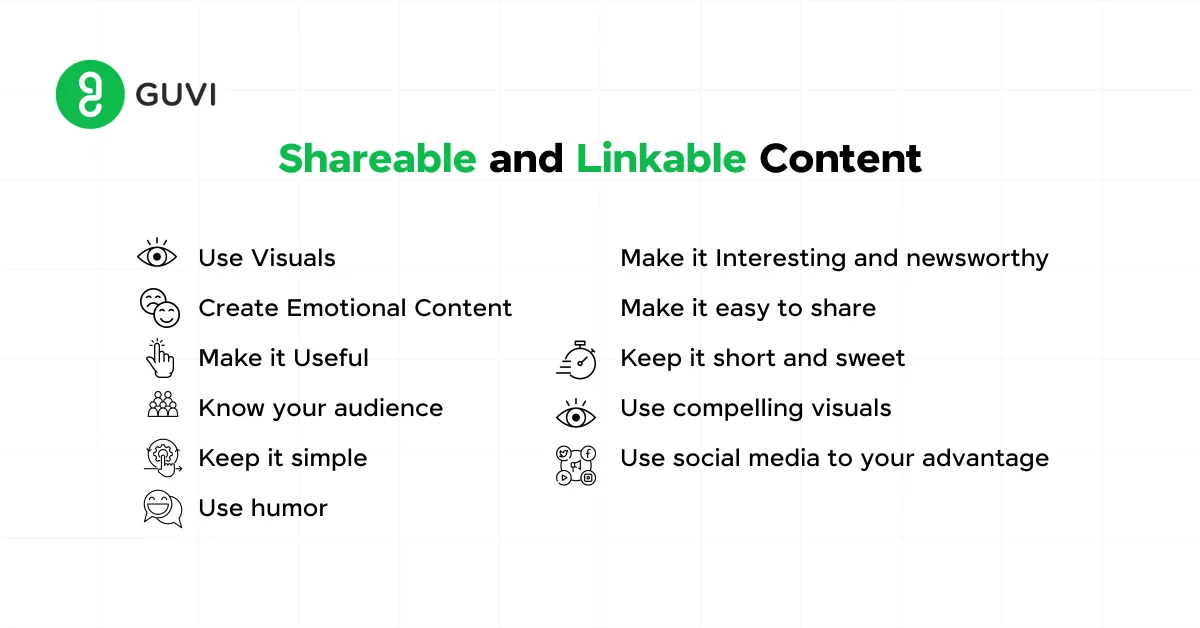
These resources should address specific needs or questions within your industry, making them go-to references for your audience and peers.
- Methodology: Research topics that lack comprehensive resources but have high interest, create high-quality content, and promote it across platforms.
- Outreach: Use social media, email newsletters, and industry forums to share your resources.
This strategy hinges on understanding your audience’s needs and interests intimately and then exceeding their expectations. It’s not just about what you want to say, but about what they need to hear.
When you hit that sweet spot, your content is widely seen, sought after, and cited, turning your site into a beacon for both users and search engines.
Also Read | The Best Software Tools to Write Content
3. Update Old Content
This strategy to build backlinks is a no-brainer. Refreshing outdated content with new data, insights, and relevant information can reinvigorate interest and attract new backlinks.
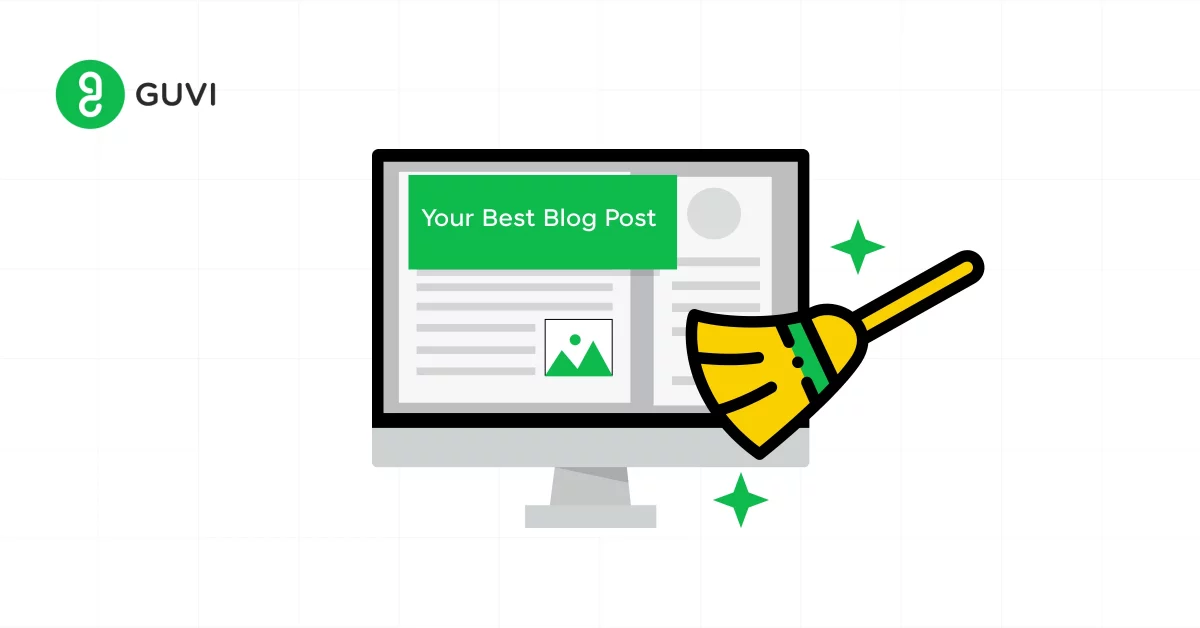
This strategy enhances the value of your existing content while demonstrating your commitment to providing current and comprehensive information.
- Methodology: Identify popular but outdated posts, update them with the latest information and trends, and then promote them as new.
- Outreach: Notify individuals and sites that have linked to or shown interest in the original content about the updates.
You can update the broken links, change dates, add new data, fresh perspectives, and relevance to today’s context. This process can lead to a resurgence in traffic and backlinks, as updated content often regains prominence in search results and becomes a renewed source of reference for others in your field.
Also Read: Top 9 AI Tools for Content Creation That You Shouldn’t Miss
4. Publish Comprehensive Niche Guides
Crafting a comprehensive niche guide requires a deep dive into the subject matter, unearthing every detail, and presenting it in an enlightening and engaging manner. These guides should cover topics extensively, offering unique insights or compiling information not found elsewhere.
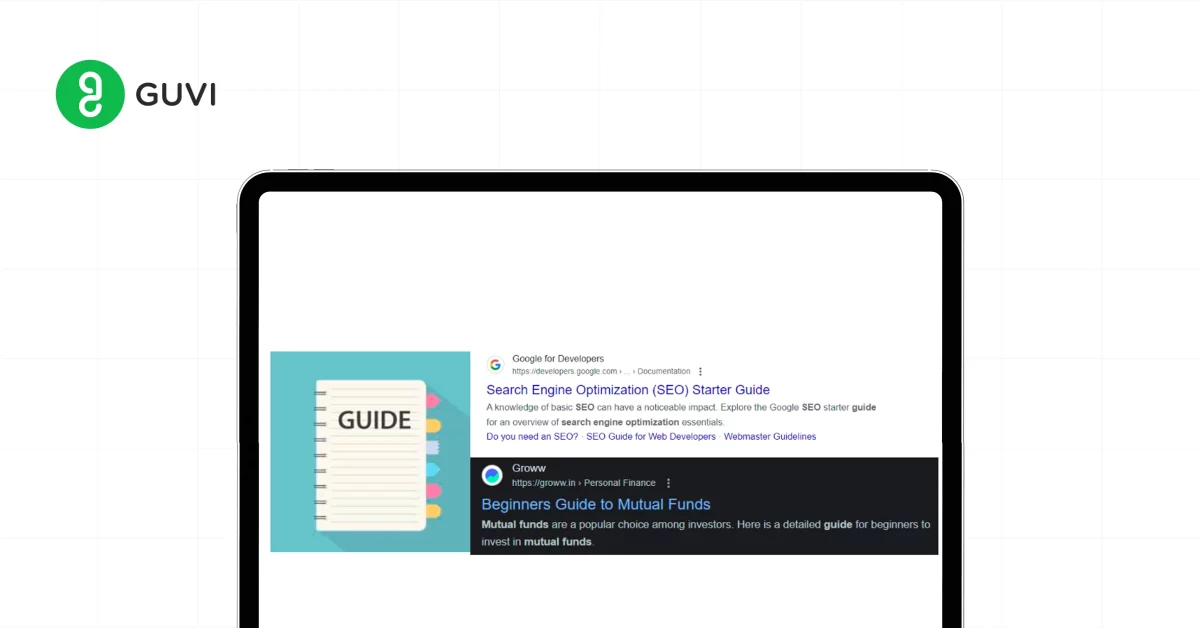
Creating in-depth guides on specific topics within your niche will be highly effective in establishing your site as an authoritative source, and encouraging others to link to your guide as a resource.
- Methodology: Research topics with high interest but limited comprehensive resources, create detailed guides, and use visuals and examples to enhance understanding.
- Outreach: Promote your guides through social media, industry forums, and email outreach to relevant contacts.
The beauty of a well-constructed niche guide lies in its ability to attract backlinks naturally as you’re sharing knowledge that becomes a legacy of expertise that others in the industry, educators, and content creators will cite, share, and link to for years for its depth and comprehensiveness.
5. Scout for Broken Links Across the Web
On the web, many blogs suffer from broken links (where the hyperlinked page is not available anymore for some reason), which can affect their SEO rankings.
Through this backlink-building strategy, you just need to jump the opportunity and bag a backlink to your website. All you need to do is find broken links on other websites and offer your content as a replacement. Let me explain.
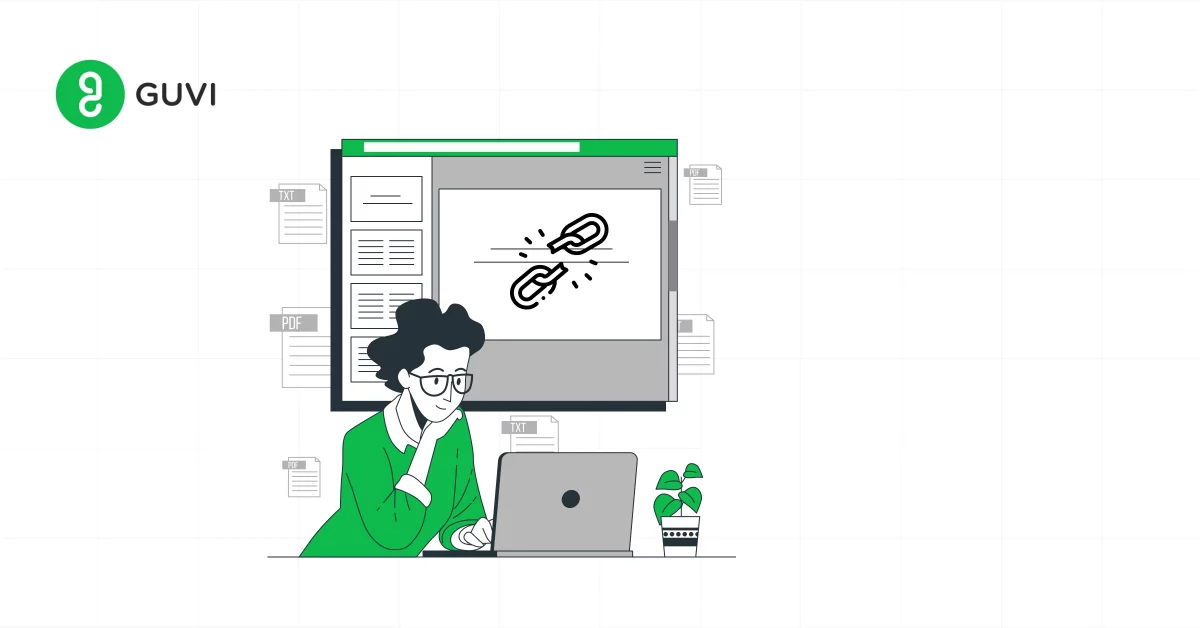
It’s a mutually beneficial approach. By identifying these broken links on websites relevant to your niche, you can reach out to the site owners with a proposition: replace the broken link with a link to your own relevant, high-quality content.
- Methodology: Use tools to find broken links relevant to your content, contact the website owner, and suggest your content as a replacement.
- Outreach: Personalized emails to website owners, highlighting the broken link and how your content can be an ideal replacement.
This strategy not only aids the website owner by fixing a poor user experience but also secures a new backlink for you, rooted in relevance and utility.
Also Explore: Optimizing Website Performance: 9 Strategies for Faster Loading User Interfaces
6. Get Mentioned Across Relevant Listicles
Listicles are one of the most popular blog formats that attract loads of readers seeking the best resources within a specific category, making them a prime target for earning high-quality backlinks.
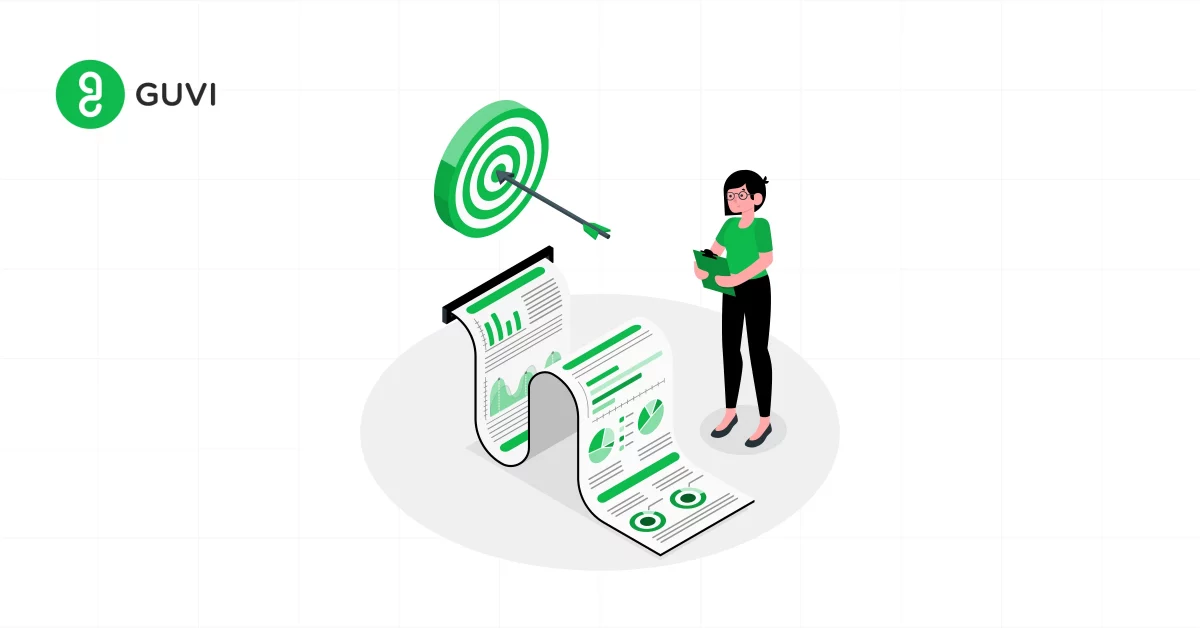
So, you can get your website featured in listicles related to your industry, which will drive traffic and provide valuable backlinks to your website. To achieve this, you must position your content or product as indispensable, offering undeniable value that listicle creators can’t overlook.
- Methodology: Identify listicles in your niche, and contact the authors/journalists with a pitch on why your content deserves inclusion. You can also suggest new listicle ideas to bloggers and journalists.
- Outreach: Personalized pitches that clearly articulate the value your content adds to their listicle while acknowledging the listicle creator’s work.
Being featured in a listicle significantly amplifies your visibility and aligns your brand with other top-tier content, reinforcing your authority and expertise.
7. Claim Mentions as Links
Transforming mentions and resources without credit into links is a hidden yet useful asset for you when building backlinks. Your brand or content may have been mentioned or spoken with admiration without specifically directing them to you.
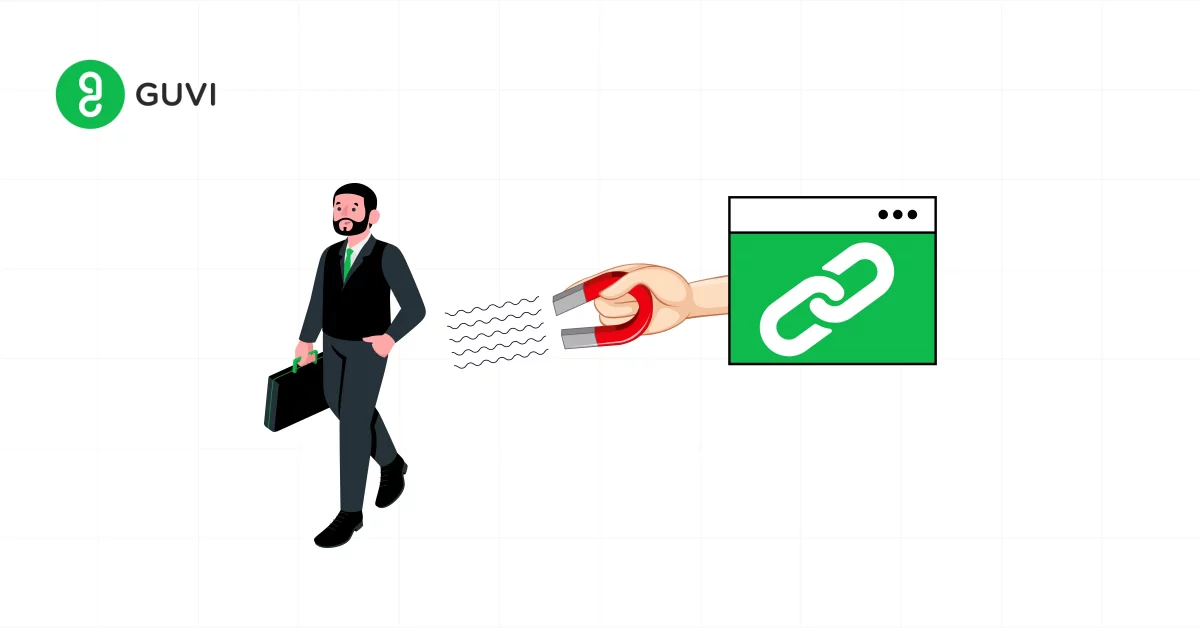
These unlinked mentions are great opportunities to earn valuable backlinks, with a little bit of outreach and diplomacy. If your brand or content is mentioned online without a link, reach out to the publisher and ask them to add a hyperlink to your site. This turns a mention into a valuable backlink.
- Methodology: Monitor mentions of your brand, product, or content using tools like Google Alerts, Mention, or BuzzSumo, then contact the site owners to request adding a link.
- Outreach: Friendly, personalized requests that make it easy for them to add the link.
This strategy is again grounded in mutual benefit. For the website owner, adding a link enhances their content’s value by providing readers with a direct route to further information. For you, it’s an effortless gain of a backlink that drives traffic and strengthens your SEO standing.
Also Explore: Data-Driven Marketing: Benefits and Challenges in 2025
8. Use Skyscraper Technique
The Skyscraper Technique is a strategic approach to content creation and promotion, where you aim to build upon existing popular content within your niche but make it taller, stronger, and more impressive.
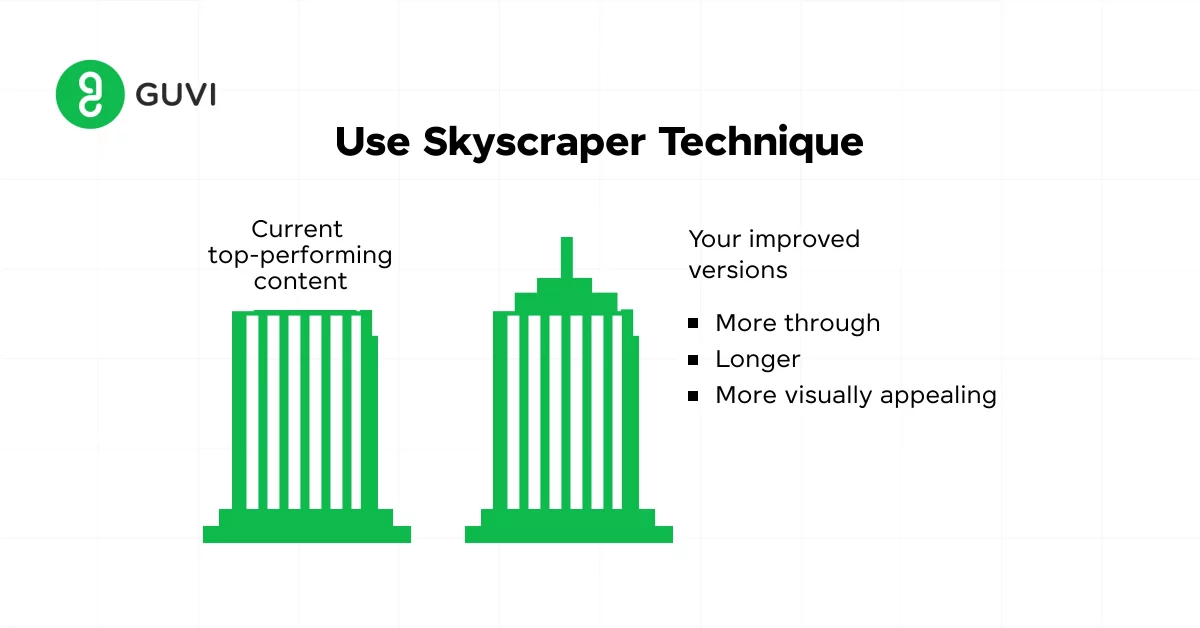
This technique involves identifying content that has already earned a significant number of backlinks and then creating something superior in knowledge, depth, quality, and value. Then, you reach out to those who linked to the original content to link to yours instead.
- Methodology: Start by researching relevant and link-worthy content for your audience. Tools like Ahrefs or BuzzSumo can help here. Once you’ve pinpointed a target piece, analyze what makes it valuable and then brainstorm ways to enhance it.
This could mean adding more recent data, covering additional aspects not originally included, or presenting the information in a more engaging format. - Outreach: Contact the websites that link to the original piece to let them know about your updated, more comprehensive resource. Send a personalized email pitch clearly articulating the added value your content brings, encouraging them to link to your piece instead.
This method is helpful in acquiring backlinks while positioning you as an authority in your niche, contributing to your overall SEO and content marketing strategy.
9. Adopt HARO
HARO or Help A Reporter Out strategy connects journalists and bloggers with sources needed to enhance their stories, offering a unique opportunity for experts to get their names—and websites—mentioned in reputable media outlets when they provide valuable insights or data.

This increases your chances of being quoted and also establishes a relationship with media professionals, potentially leading to more opportunities in the future.
- Methodology: Sign up as a source, and respond to relevant queries that align with your expertise with insightful, thoughtful answers promptly and thoughtfully.
Your responses should be concise, informative, and directly address the journalist’s request, providing them with valuable insights or data they can’t easily find elsewhere. - Outreach: Concise, informative responses that directly address the journalist’s query.
This platform is a goldmine for securing authoritative backlinks, as mentions often come from high-traffic, high-domain-authority sites. It’s a strategy that rewards expertise, helpfulness, and timely communication, positioning your site as a go-to resource in your field.
Engaging with HARO requires patience and persistence, as not every pitch will result in a backlink. However, when successful, the quality of these backlinks can significantly boost your SEO efforts, driving traffic and enhancing your site’s credibility.
10. Leverage Social Media and Influencers
Leveraging social media and influencers in your backlink strategy can amplify and catapult your content into the spotlight, encouraging shares, mentions, and, ultimately, backlinks from various sources.
The key to success lies in identifying influencers whose audiences overlap with your target demographic. Collaborating on content, whether it’s a guest post, an interview, or a shared project, provides you with valuable backlinks and exposes your content to a broader audience.

You can also keep engaging on social media platforms, sharing your insights, participating in discussions, and connecting with your community to increase the visibility of your content. Collaborating with influencers can further extend your reach and credibility.
- Methodology: Share your content on social media, engage with your audience, and partner with influencers to promote your content.
- Outreach: Engaging social media posts and direct outreach to influencers with collaboration proposals.
This heightened visibility often translates into more organic backlinks, as your content reaches individuals and sites eager to share high-quality, authoritative resources.
Remember, the goal is to create genuine relationships and provide value, making it natural for influencers and their followers to link back to your content. This approach will enrich your backlink profile profoundly while building your reputation as a trusted authority in your domain.
Also Read: Best Digital Marketing Tools in 2025 [With Bonus AI Tools]
11. Create and Offer a Valuable Tool For Free
This strategy to build backlinks involves developing a tool, resource, or piece of software that addresses a specific need within your niche, and then offering it at no cost. The key is to ensure that the tool provides enough value to make users want to share it with others.
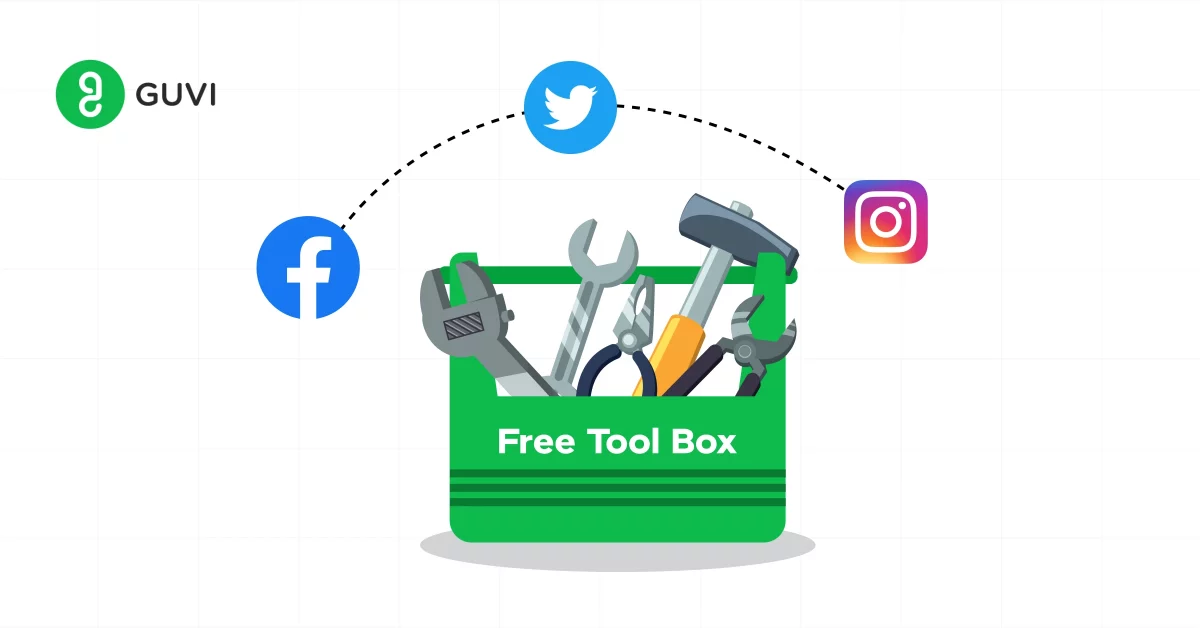
The utility and relevance of this tool naturally encourage users and industry websites to link to it, share it on social media, and mention it in forums and articles.
The development of such a tool requires a deep understanding of your audience’s challenges and pain points. It could be anything from a comprehensive SEO audit tool, a customizable template for content creation, or an interactive calculator that simplifies complex calculations in your field.
- Methodology: Identify a need within your niche, develop a tool that addresses that need, and promote it to your target audience.
- Outreach: Once your tool is live, promote it aggressively through your channels, industry forums, and social media. You can also reach out to influencers for reviews or consider running ads to reach potential users directly.
As your tool gains popularity, it will start attracting backlinks organically, not just for its utility but also as a token of appreciation from the community it serves.
This strategy also positions your brand as a generous contributor to your industry while enhancing your backlink profile, and building goodwill and authority.
12. Get Links Through Image and Video Content
Creating compelling images and video content is a wonderful way to build backlinks. It strategy leverages the power of visual media to generate backlinks, as bloggers, journalists, and content creators often seek out high-quality images and videos to enhance their own content.
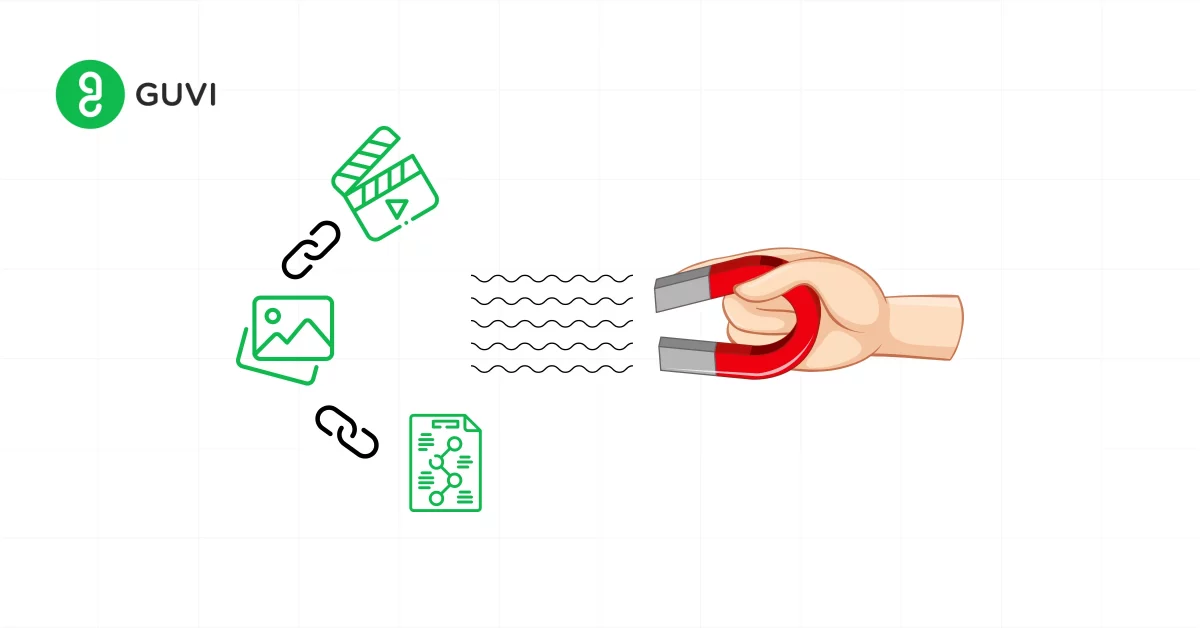
To maximize the impact of this strategy, consider creating infographics, charts, and videos that distill complex information into digestible, visually appealing formats, which can earn backlinks when sites link to them as a reference or to enhance their own content.
- Methodology: Create high-quality, informative visual content and share it widely.
- Outreach: Sharing on social media, visual content platforms, and direct outreach to sites that might benefit from your visuals.
Promoting your visual content through social media platforms, image-sharing sites, and video platforms increases its visibility, making it more likely to be picked up by content creators and generating backlinks.
Additionally, offering to customize or personalize visuals for specific uses can foster direct relationships with other sites, leading to more backlinks.
For the success of this strategy, ensure that your visual content is easily shareable and properly tagged with your information to facilitate attribution and backlinking.
Must Explore: 14 Best AI Image Generator Tools
13. Perform and Publish Original Research
Performing and publishing original research offers new insights and data that can significantly contribute to your field. This strategy involves conducting studies, surveys, or experiments that yield valuable information, which you then share with your audience.
Whether it’s uncovering industry trends, benchmarking data, or exploring consumer behavior, your research should aim to fill a gap in existing knowledge.
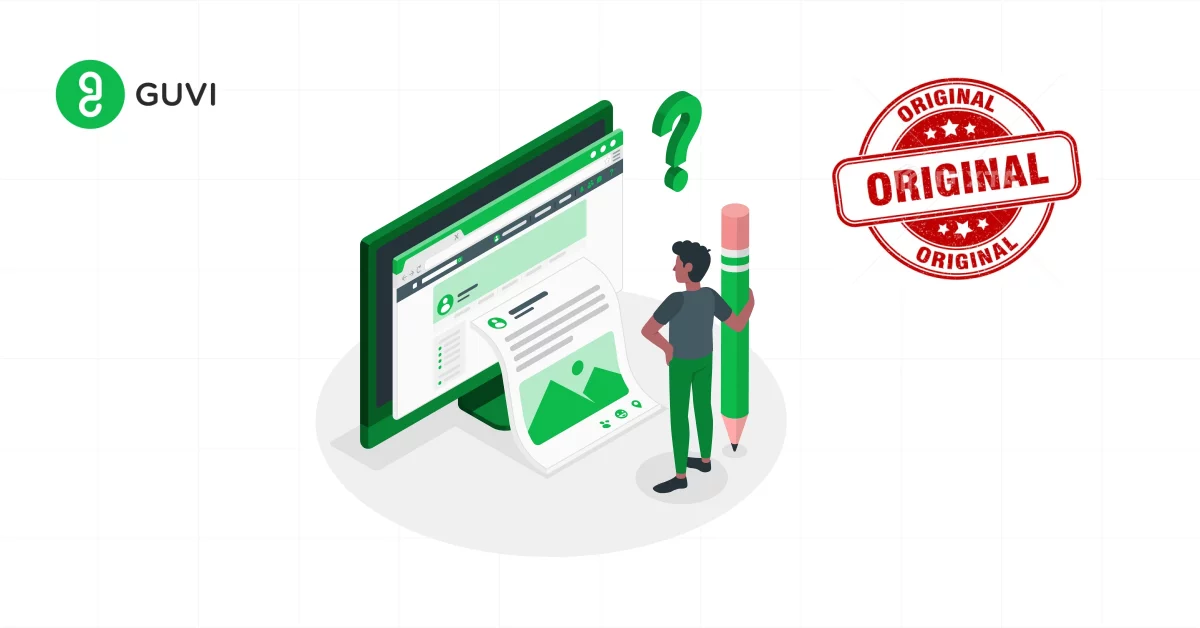
Original research is highly linkable because it provides a unique value that cannot be found elsewhere, making it a magnet for backlinks as citations from other websites, news outlets, and academic papers reference your findings in their own content.
- Methodology: Conduct research relevant to underserved or new topics in your niche, publish your findings, and promote them to your industry.
- Outreach: Press releases, social media promotion, and direct outreach to industry publications.
Not only does original research attract backlinks, but it also establishes your brand as a thought leader in your field, enhancing your credibility and authority.
This approach requires a significant investment in time and resources, but the payoff in terms of backlinks, visibility, and brand positioning can be substantial.
14. Get Links from Directories and Resource Pages
Being listed in reputable directories or resource pages related to your industry can provide valuable backlinks and drive targeted traffic to your site.
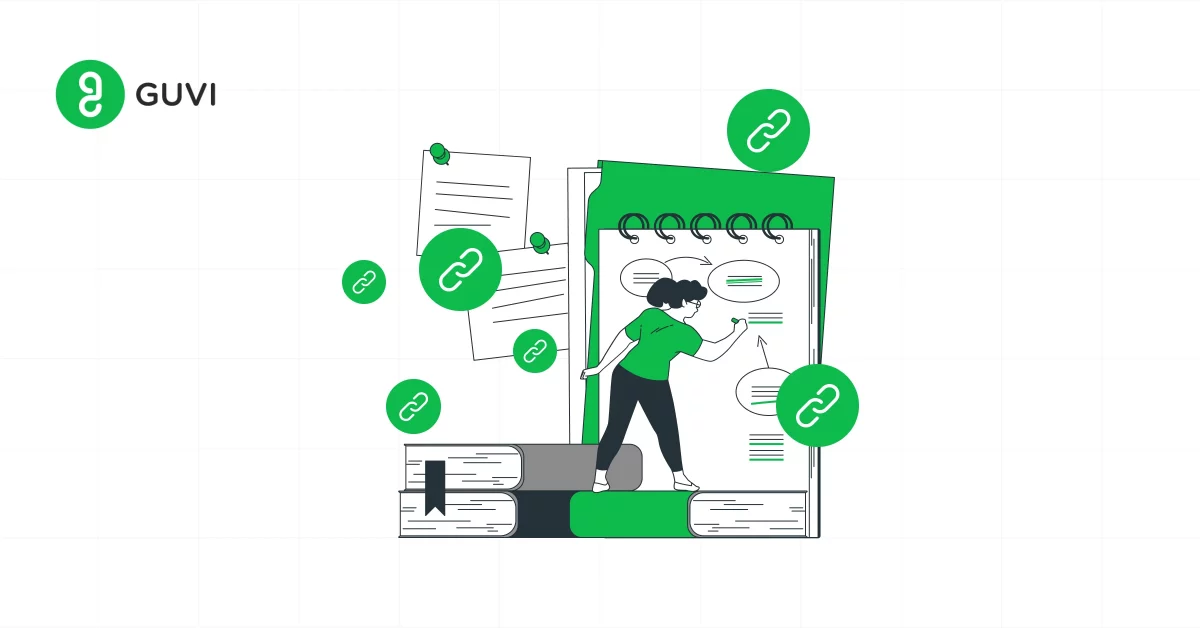
This way of generating high-quality backlinks involves identifying reputable directories and resource pages that are relevant to your niche and submitting your website or specific pieces of content for inclusion.
- Methodology: Research well-regarded directories and resource pages within your industry. Look for those that maintain high standards for inclusion and are frequented by your target audience.
When submitting your site, be sure to provide detailed, accurate information that highlights the unique value you offer. - Outreach: Submission forms or direct contact with directory owners. Additionally, consider reaching out to webmasters of resource pages directly, suggesting your content as a valuable addition to their list. Personalize your outreach, explaining why your content is a good fit and how it benefits their audience.
Unlike the indiscriminate directory submissions of the past, the focus here is on quality and relevance, ensuring that your links are placed in contexts that offer genuine value to users.
Also Read: How to Learn Digital Marketing in 2025?
15. Get Help from Partners/Industry Contacts/Suppliers
A major part of building superior backlinks is community outreach. Leveraging relationships with partners, industry contacts, and suppliers to gain backlinks taps into the existing relationships and collaborations you have built within your industry to mutually benefit from linking to each other’s content.
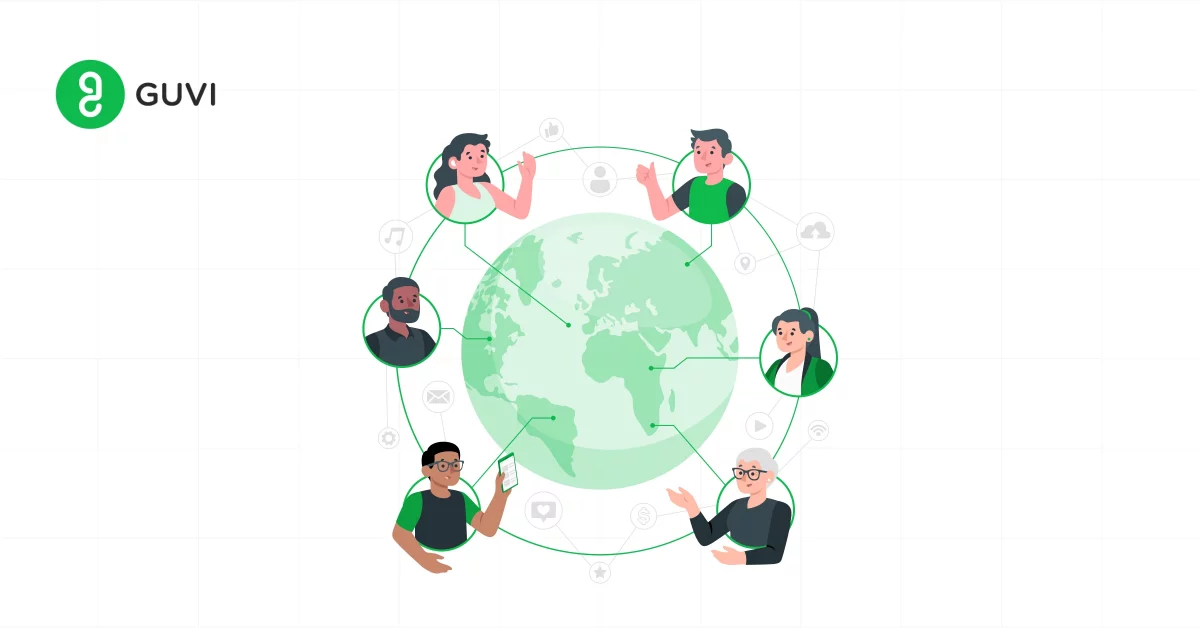
Utilize relationships with business partners, industry contacts, and suppliers to gain backlinks. They may feature your content, products, or services on their sites.
- Methodology: Identify partners, contacts, or suppliers whose content aligns with yours in terms of quality and relevance. Consider how linking to each other’s sites can provide value to both parties, whether through enhancing content with additional resources, offering exclusive deals, or sharing expert insights.
- Outreach: Personalized outreach to existing contacts or potential partners highlighting the mutual benefits clearly, in terms of deliverables.
This approach not only helps in securing backlinks from trusted sources but also strengthens your relationships within the industry, fostering a network of support that can lead to further opportunities down the line.
Join GUVI’s Digital Marketing Course to kickstart your journey in this exciting field. Gain expertise in ChatGPT, WordPress, Meta Business Suite, Google Analytics, Youtube Analytics, Google Ads Manager, and more. Master essential skills in SEO, social media marketing, email marketing, content creation, and digital advertising tactics to excel in the Digital Marketing industry.
Alternatively, if you want to explore Marketing Research Techniques through a Self-paced course, try GUVI’s Marketing Research Techniques certification course.
Concluding Thoughts
Acquiring high-quality backlinks is both a science and an art. It requires diligence, creativity, and a commitment to providing value at every turn.
The message here is clear. In case of backlinks, quality is always above quantity. A few relevant, high authority, backlinks will trump thousands of low-quality backlinks.
By employing the strategies outlined above, you’ll gain good rankings, but additionally, you’ll create a unique space in your niche, which is worth the effort.
Must Read: 10 Best Digital Marketing Projects in 2025
FAQs
-
A backlink is a hyperlink from one website to another, serving as a vote of confidence and authority in the digital realm.
-
Backlinks are crucial for SEO because they signal to search engines that other websites consider your content valuable, thus improving your site’s visibility and ranking.
-
High-quality backlinks can be obtained through strategies like guest blogging, creating valuable content, leveraging social media, and engaging in community outreach.
-
A high-quality backlink comes from a reputable, relevant site, has proper anchor text, and is naturally integrated into the content.
-
Yes, backlinks from spammy or irrelevant sites can negatively impact your site’s ranking. It’s important to focus on quality over quantity.
-
Yes, NoFollow links can drive traffic and support your site’s visibility, even though they don’t directly influence search rankings.




















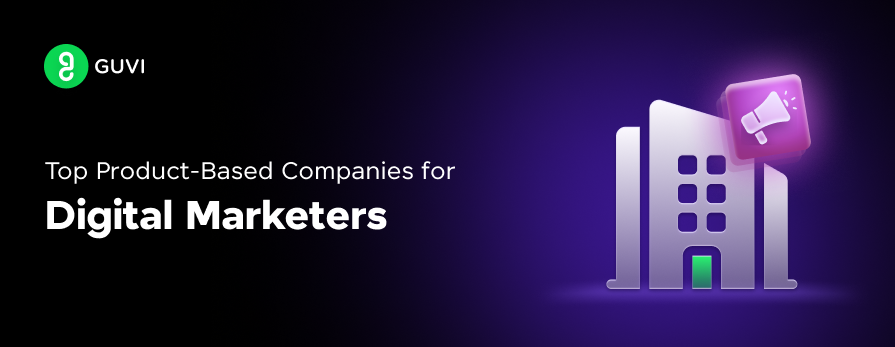









Did you enjoy this article?